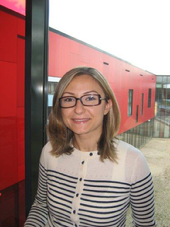Microfluidics Studies of Interfacial Transport
Promotion date: September 27.
Promotor: Prof.dr.ir Rob Lammertink
Assistant promotor: Dr. Peichun Amy Tsai
| Transport phenomena at interfaces often determine or limit the process performance, as also encountered in macro-scale systems. Therefore, direct investigations of interfacial transport of momentum, mass and heat at the interfaces in micron scale are highly appreciable for further optimization of various micro- and macro- scale technologies. Within the scope of this doctoral research, the interfacial transport phenomena in microfluidics is investigated, aiming at a better understanding of fluid motion and the associated transport processes driven at interfaces. The focus was on two primary areas: (i) hydrodynamic slippage and interface driven mass transport near soft gas-liquid interfaces and (ii) ion concentration polarization near charge selective interfaces.
|
Was your research application oriented or more fundamental in nature?
Looking at the fundamentals of phenomena, by performing various experiments and at the same time numerical simulations, was a central issue in my investigations. The main goal was not to design a chip for a specific engineering application. Nevertheless the phenomena investigated are taking place at ‘attractive’ interfaces for future processes in lab-on-a-chip design and electrodialyses: soft gas-liquid interfaces and charge selective interfaces, the last of which are unique and promising.
For flowing liquids on a gas bubble mattress, phenomena were observed which couldn’t be accounted for by classical theory. In my research, on the main project and in some five subprojects, the same feedback loop recurred: translating simulation runs into building experiments and performing measurements, and so on.
This type of research was an exciting process in which our group - Soft Matter, Fluidics and Interfaces - collaborated with the Physics of Fluidics group. Chemical engineering aspects always played an important role in the phenomena investigated. The microfluidic scope of research appeared to be the ideal platform to study. Like in macro scale processes, stick and slip features are important parameters which should be taken into account in designing new products and applications. On micro and nano scale, a lot of these features are not very well-known yet, for example momentum and mass transfer taking place at bubble surfaces. It is a major challenge to gain insight in these and to formulate new models and obtain experimental verification, which can be of help for designers of products, applications and measurements of new phenomena.
So, collaboration was a main part of your thesis project?
Very much so. I started on this project as a member of the membrane group. Back that time my supervisor Rob Lammertink has gained NWO funding, and later on an ERC project, formulating these kind of “processes on a chip”. We were all flexible in formulating the exact research themes in a newly structured organisational setting, having talks and meetings frequently, and always coming up with new, fruitful ideas.
By doing so, I didn’t perceive the changes as dips and downs. The projects almost all led to nice results, and from the others I learned a great deal.
One article appeared in Proceedings of the National Academy of Science (PNAS) and two articles in Soft Matter, and a main one in Lab-on-a-Chip Journal. Some months ago I was lucky to receive a Rubicon grant, which enables me to go and work for two years at Stanford University, further investigating charged surfaces and ion-concentration polarization. I guess this research can be of direct impact for membrane designers, for example in electro dialyses.
In what way did you develop on a personal level, as a scientist and researcher, in these four years?
My background is Chemical Engineering. Previously I worked on gas separation by polymeric membranes. Here I learned a lot about microfluidics, microfabrication techniques and a lot of experimental skills. Due to these experiences, now I feel an all-round scientist.
Also I learned that collaboration and team work are the key success factors in scientific research. Sharing knowledge and learning from colleagues, I now value greatly.
Mesa+ possesses a lot of know-how. The PhD researchers have easy access to professors and technicians, being very helpful to get the best results possible by using the great cleanroom facilities Mesa+ has to offer. I owe a great deal to all of them.
What are your future plans?
I would like to keep in touch with academic research throughout my career. I will bring along with me the interdisciplinary culture I learned to value here at Mesa+. Of course, I am not sure where I will be going after my post-doc period in the US and which research facilities and teaching positions are available then. Becoming a leader of my own research group, is my ultimate dream.

